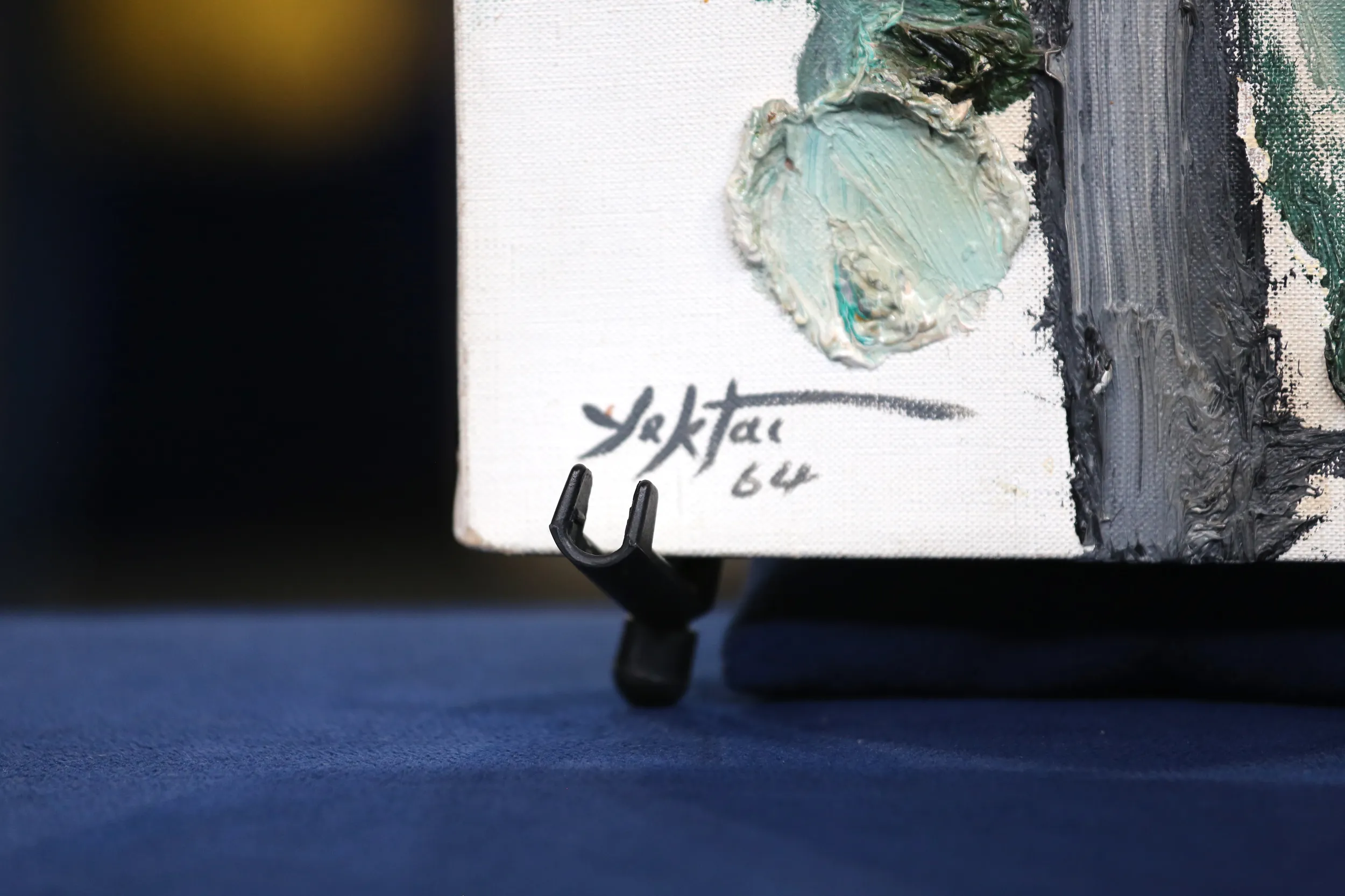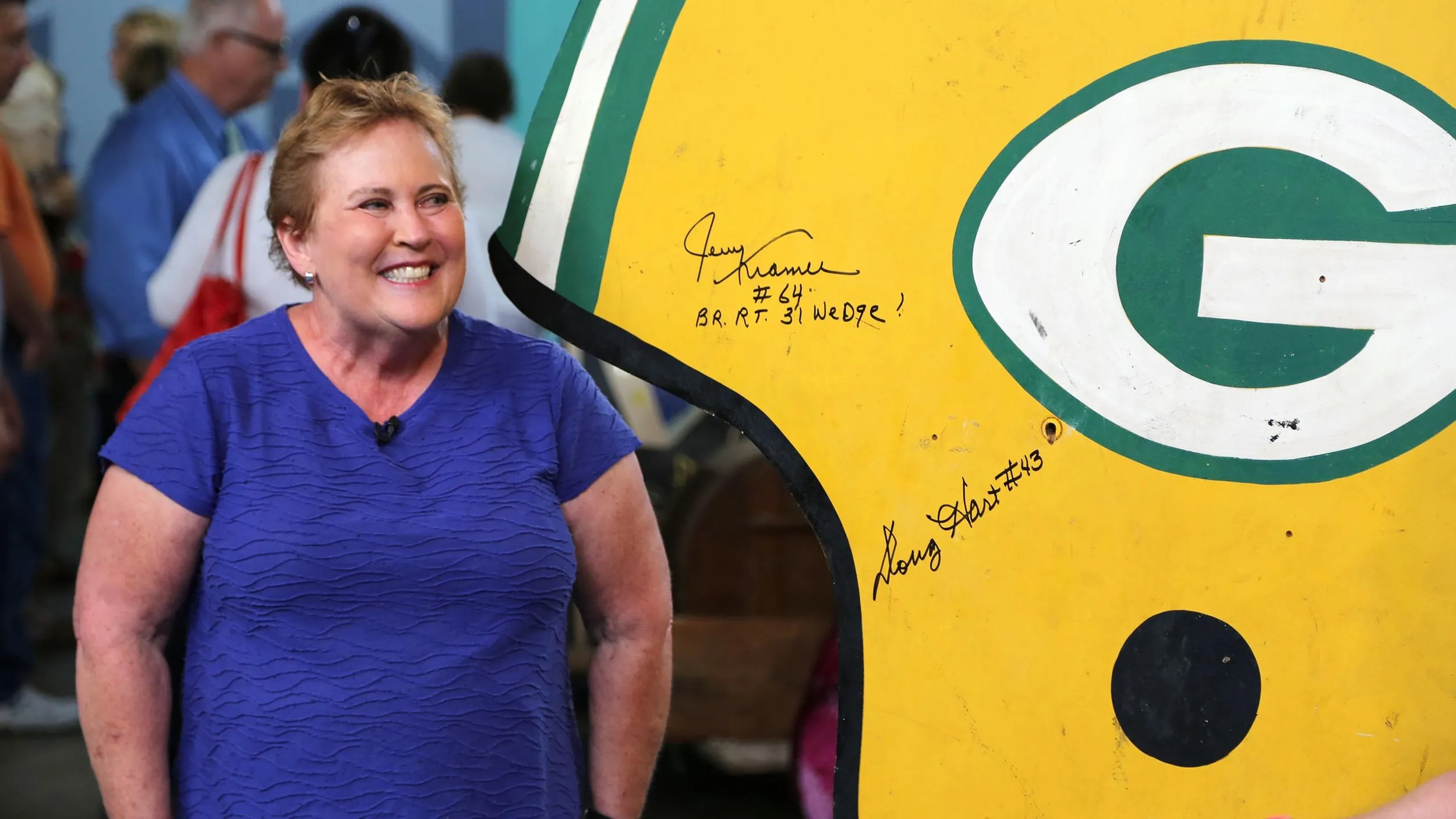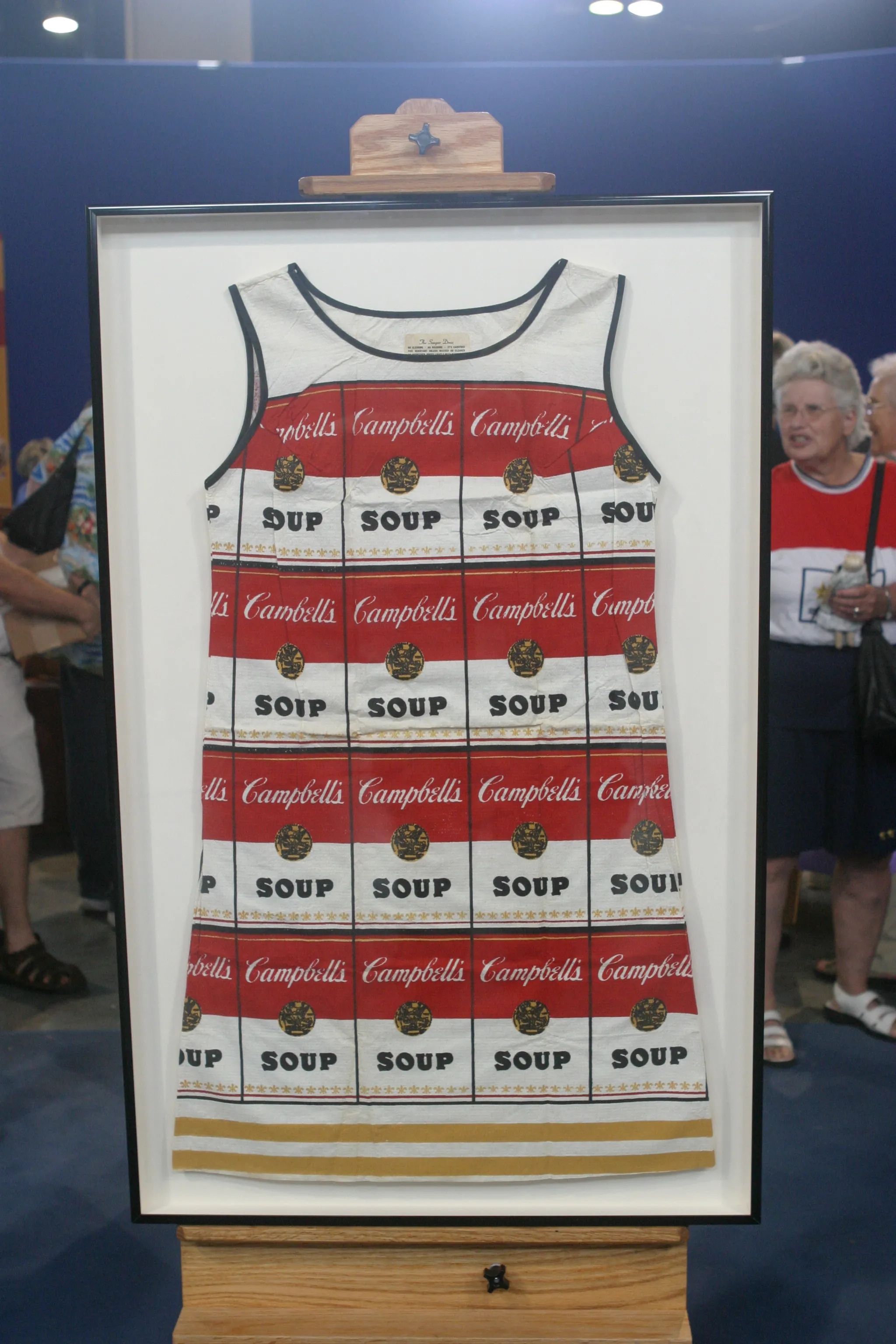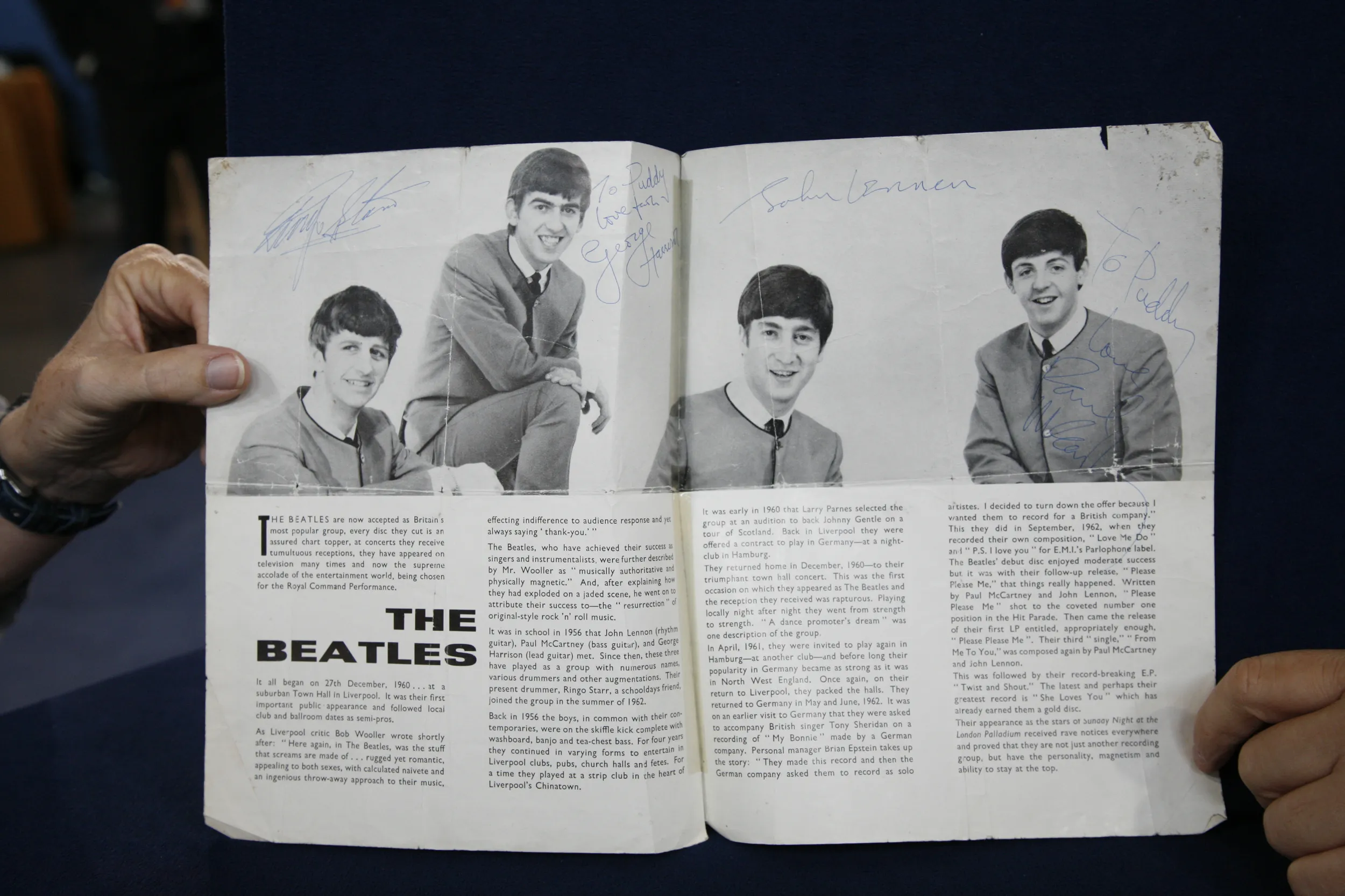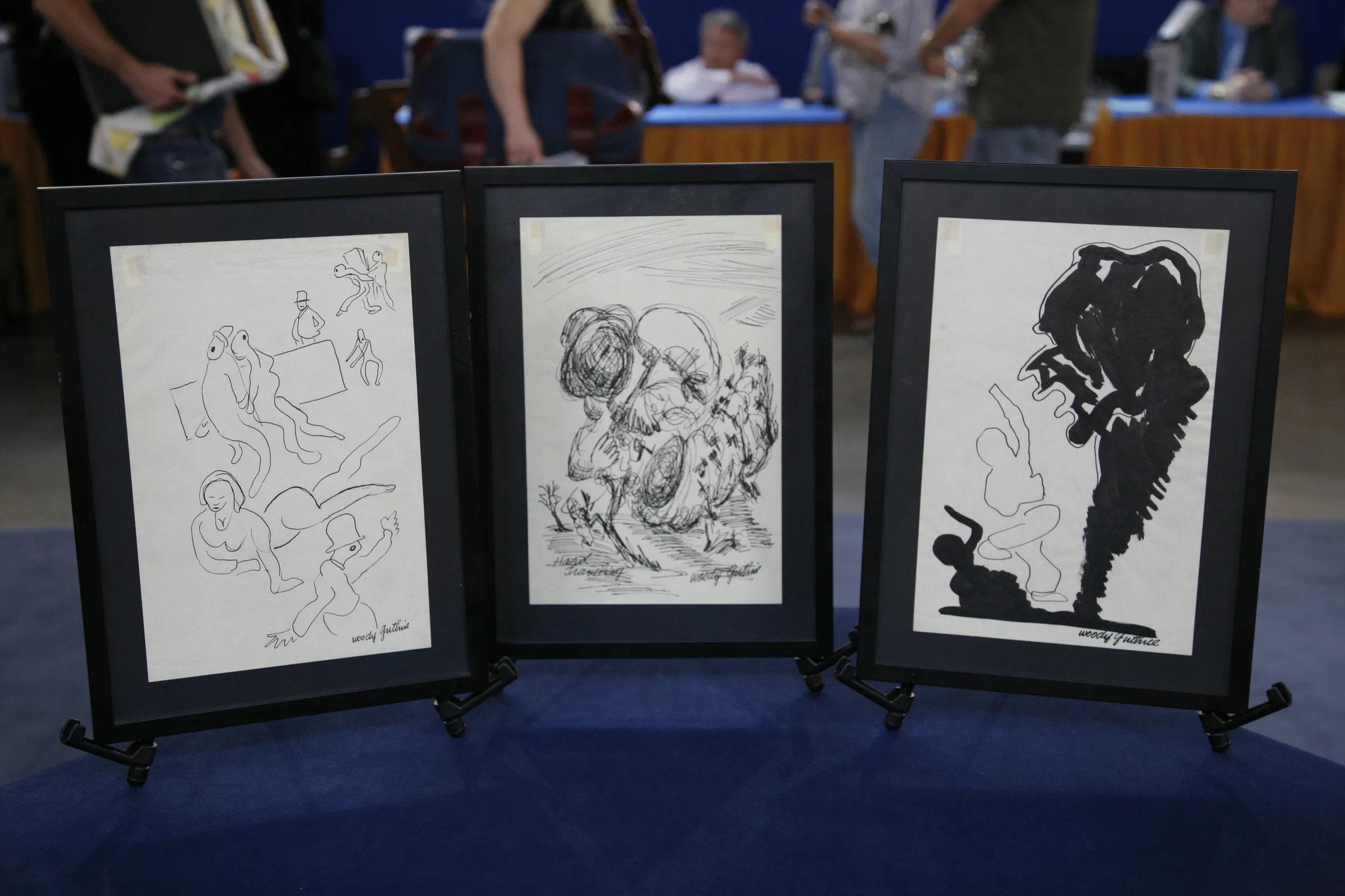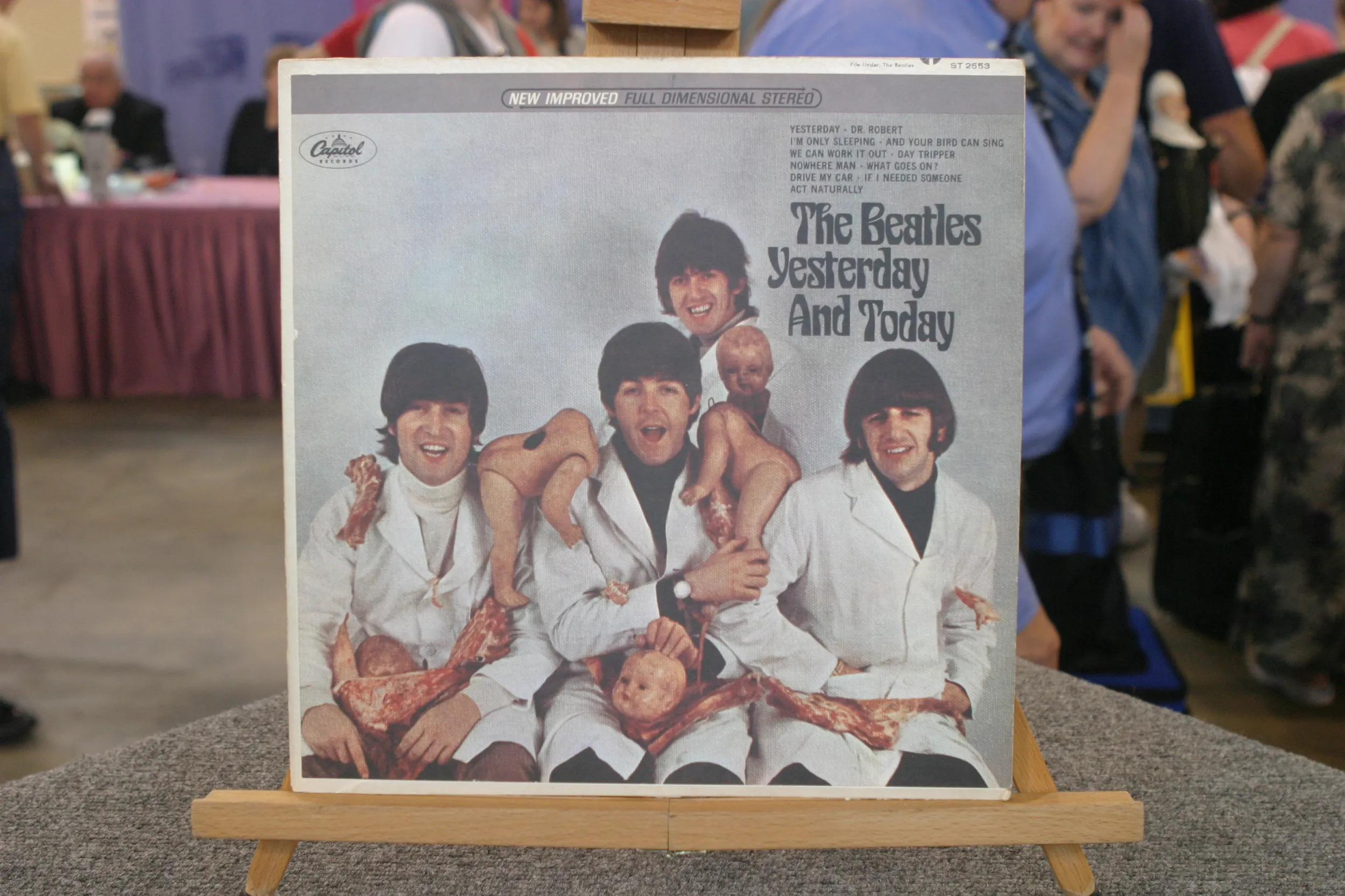GUEST: I got it from Minnesota, actually. I usually go to estate sale. We went to an estate sale in one house, and that house is full of art. So I loved the first art that I saw, which was very huge, in the living room. (laughing) But my husband said, "It won't fit in our car."
APPRAISER: (Laugh)
GUEST: So my daughter saw this one in a corner, and she told me that, "Mom, that one will fit our car."
APPRAISER: (Laugh)
GUEST: So I look at it, and then I look at the thick paintings of that one, and then notice the name underneath the other one. It seems like, it's ringing my ears that Yektai, it seems like I've seen that one already in your "Antique Roadshow."
APPRAISER: Can you tell me about how long ago you purchased it?
GUEST: November of last year, only.
APPRAISER: Okay. Can I ask what you paid for it?
GUEST: It's $100.
APPRAISER: Okay. And that was the asking price?
GUEST: No, it was $300, but it was the second day of the sale and it was too late already in the afternoon. I was able to negotiate.
APPRAISER: Excellent! Well done. As you noticed, the piece is signed here in the lower left, signed and dated, Yektai. Do you know his first name?
GUEST: It's Manoucher, right?
APPRAISER: Manoucher Yektai, very good. And it's dated 1964. What do you know about the artist?
GUEST: I know that he is an Iranian artist.
APPRAISER: Uh-huh, and he was originally from Iran, but he was sort of a world traveler. So he studied in Iran, and as he was finishing up at university, it was right in the middle of World War II. And he was fascinated by the modern world, and decided he wanted out of Iran. He wanted to go to Paris, which was sort of the center of the art world, but World War II was still going on. So he went to New York to sort of wait out the war, and didn't think he was going to love New York, but actually really enjoyed it. But then, it was time to go to Paris. That was his game plan, he was going to Paris. So he goes to Paris in '45, he stays there for a couple of years, and he's fascinated by some of the great, early French modernists of the 20th century. So Matisse and Braque and Picasso. But as he's working in Paris, he realized he missed the energy of New York, because New York after the war was just burgeoning with art energy. And so he went back to New York in '47. And in 1947, that's when Pollock and Newman and the Abstract Expressionists are just really getting started. So this is a wonderful oil on canvas. One of the things I love about this is that thick, heavy paint. You used a term when we first talked, "impasto."
GUEST: Yeah, that's what I heard, yes, impasto, yeah.
APPRAISER: Yeah, it has heavy impasto, but when I see paint like this, I had my own word for it, which is, it's "goodgy."
GUEST: Ooh... Goodgy
APPRAISER: It just, it's goodgy. Which doesn't actually-- it's just a made-up word-- but you look at the texture of this, and it is. It's goodgy. And it's expressive. And so it has a kinship with those Abstract Expressionist painters, and yet he remains attached to the real world. So even though we don't look at this and say, "Oh, this is clearly a persimmon tree," we're very aware that it has a branch-like structure to it, with these leaf and fruit-like structures, and he never completely abandoned the figurative world. He's very much an individual. He's not just doing what everybody else was doing. So he, sort of, is his own man, and invents his own style, to a certain extent.
GUEST: Well, that's good.
APPRAISER: Do you have any idea what it might be worth?
GUEST: If that is really authentic, then probably it's more than $10,000, based on the website that, you know, about his paintings. It's, like-- that's the price of it. I do not know, because this one is a smaller version of what I've seen from the internet, so... Could be.
APPRAISER: I think it's right. I think it's absolutely right. The artist is actually still alive.
GUEST: I know!
APPRAISER: His son actually operates his website, so if you want to be 1,000% sure, what I would do, if it were mine, is I would actually contact the artist and his son and show them pictures. And I would be flabbergasted if they didn't agree, but that is what I would still suggest you do just to be certain. Assuming it's right, at auction, you'd reasonably expect this to fetch $15,000 to $25,000.
GUEST: (Laughing): Oh, Lord-- thank the Lord. Oh, really? My goodness. My husband will be, "Huh?!" (both laugh)
APPRAISER: Good.

